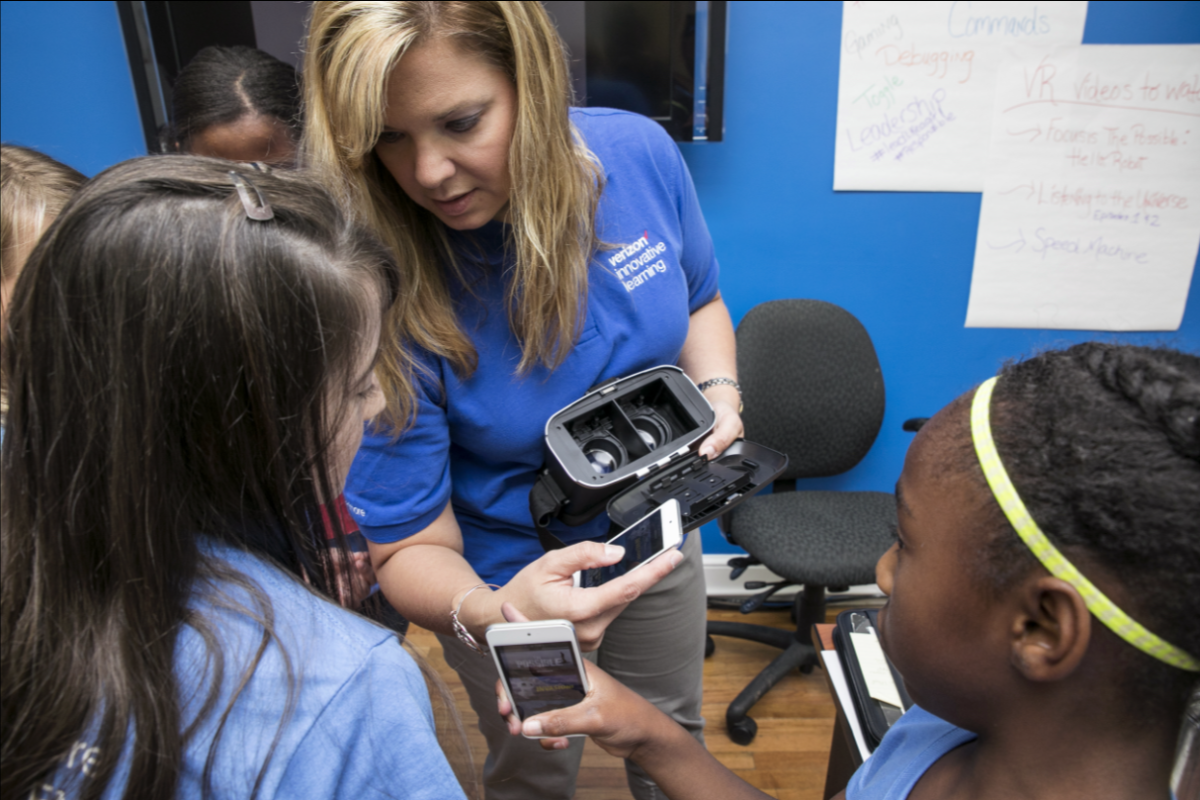Can Creativity Be Taught?
By Victoria Glazar, Verizon Corporate Social Responsibility

According to the Future of Jobs Report by the World Economic Forum, creativity is one of the top three most important skills for future workers, along with complex problem solving and critical thinking. The report notes that by 2020 rapid technological change will make more than a third of the skills considered important in today’s workforce obsolete. In fact, 85 percent of the jobs that will exist in 2030 haven't even been invented yet, says a report by the Institute for the Future and a panel of 20 tech, business and academic experts from around the world.
Experts agree that creativity is critical to success in the future. But can creativity be taught? If so, how? Middle school teachers are finding answers to these questions in a program that aims to put today’s students on the path to success in tomorrow’s jobs. The initiative, called Verizon Innovative Learning, gives a tablet with data plan to every student and teacher in under-resourced middle schools. Also, teachers are provided with comprehensive training on strategies to integrate technology into learning, and an on-site Digital Learning Coach, trained by the nonprofit Digital Promise, to provide individualized support.
With its tech-infused curriculum, Verizon Innovative Learning is changing the way teachers teach and students learn. The changes are resulting in student gains in academics, and perhaps more importantly, in the “soft skills” that will be increasingly important in tomorrow’s jobs.
“The biggest difference that I see with students is creativity,” says Kara Noah, an Instructional Technology Specialist in the Irving, Texas Independent School District. “In the past, one of my major frustrations with students was the absence of originality and imagination in their work. On projects, I’d see the same thing over and over.”
Time, she notes, is one of the biggest factors limiting the cultivation of creativity in the classroom. “We’re usually in a crunch time around state testing, and there is so much that needs to get done during class that we really don't allow much time to practice creativity.”
Now, she says, students have access to the internet on their tablets 24/7, so they can take their time to fuel their creative sides. Along with more time, the technology gives students more scope, Noah says. She says that the tablets are like portals through which students can access a universe of ideas. They can research art, history, nature, foreign countries, science fiction – and the list goes on. “Now, their horizons are limitless,” she says.
And it’s making a difference. “Our district hosts an annual event called iCreate, where students can submit projects that they have created. For years, our school struggled to get projects into the Featured Room, which displayed the best projects. But this year we got two accepted!” she exclaims.
Alissa Womack, Digital Learning Coach in the Irving school district, helps teachers understand how to use technology to help students tap into their creativity. She notes that students are demonstrating creative solutions more than ever, giving an example from a recent English Language Arts class. “The teacher let students choose how to display their knowledge of the book, ‘Freak the Mighty.’ On this kind of assignment in the past, we used to see a bunch of Powerpoints and not much else. But this year we had kids’ creating prosthetic body parts, making robotic arms from recycled materials, and producing stop motion video, among other things,” she says.
Noah adds that letting students choose is key to promoting creativity. “One of the best things we can do is to put kids in the driver’s seat. When we let kids choose how to demonstrate their knowledge, we see them come up with things we would never imagine.”
Another teacher in a Verizon Innovative Learning school also observes an increase in creativity among students. Chris Reasor, a teacher at Patrick Henry Middle School in New York City, adds, “We have seen the school environment change in a lot of ways. More student-centered learning. Teachers do less lecturing and more guiding students as they drive the learning. This discovery-type approach encourages students to explore and create things,” he says.

